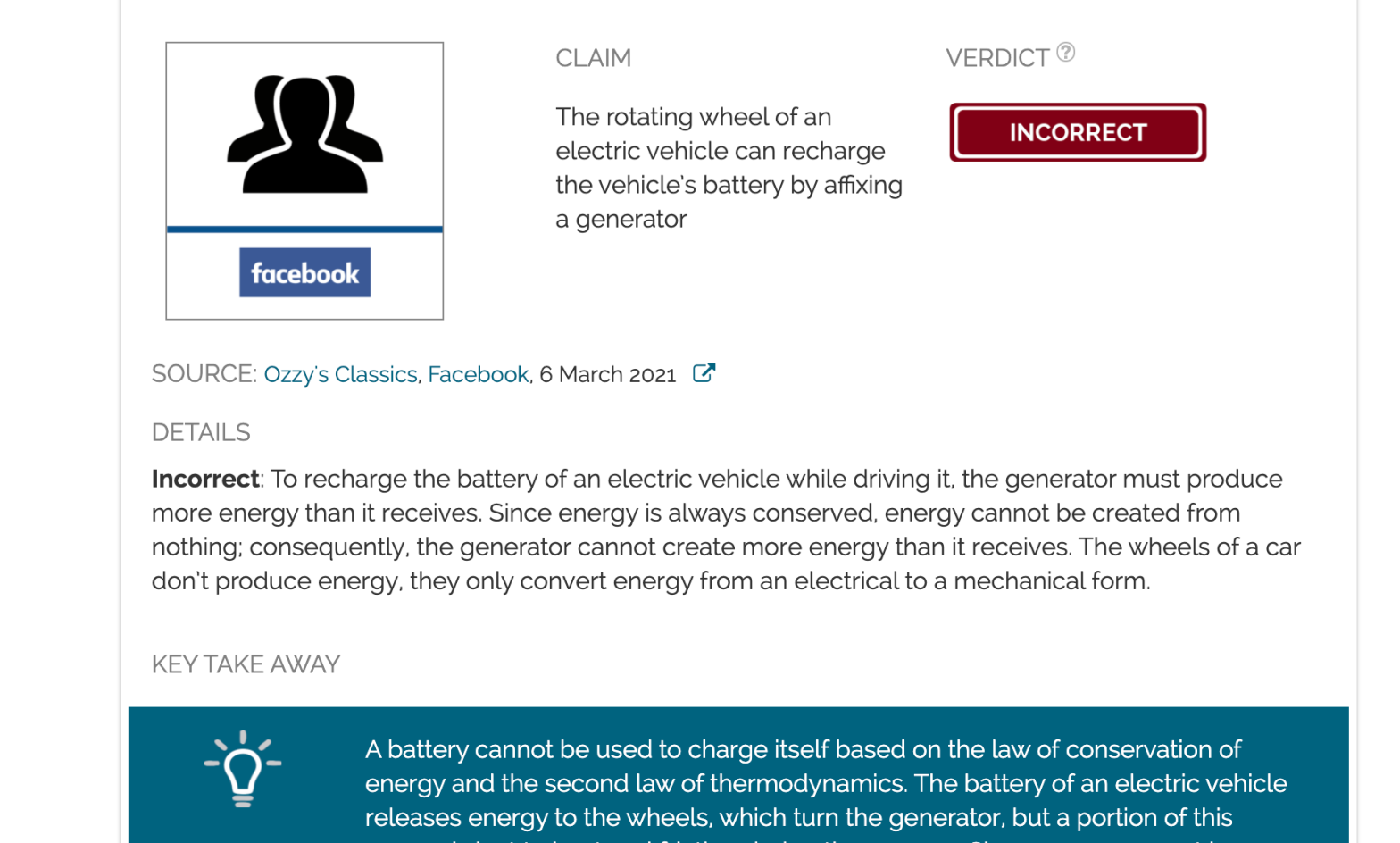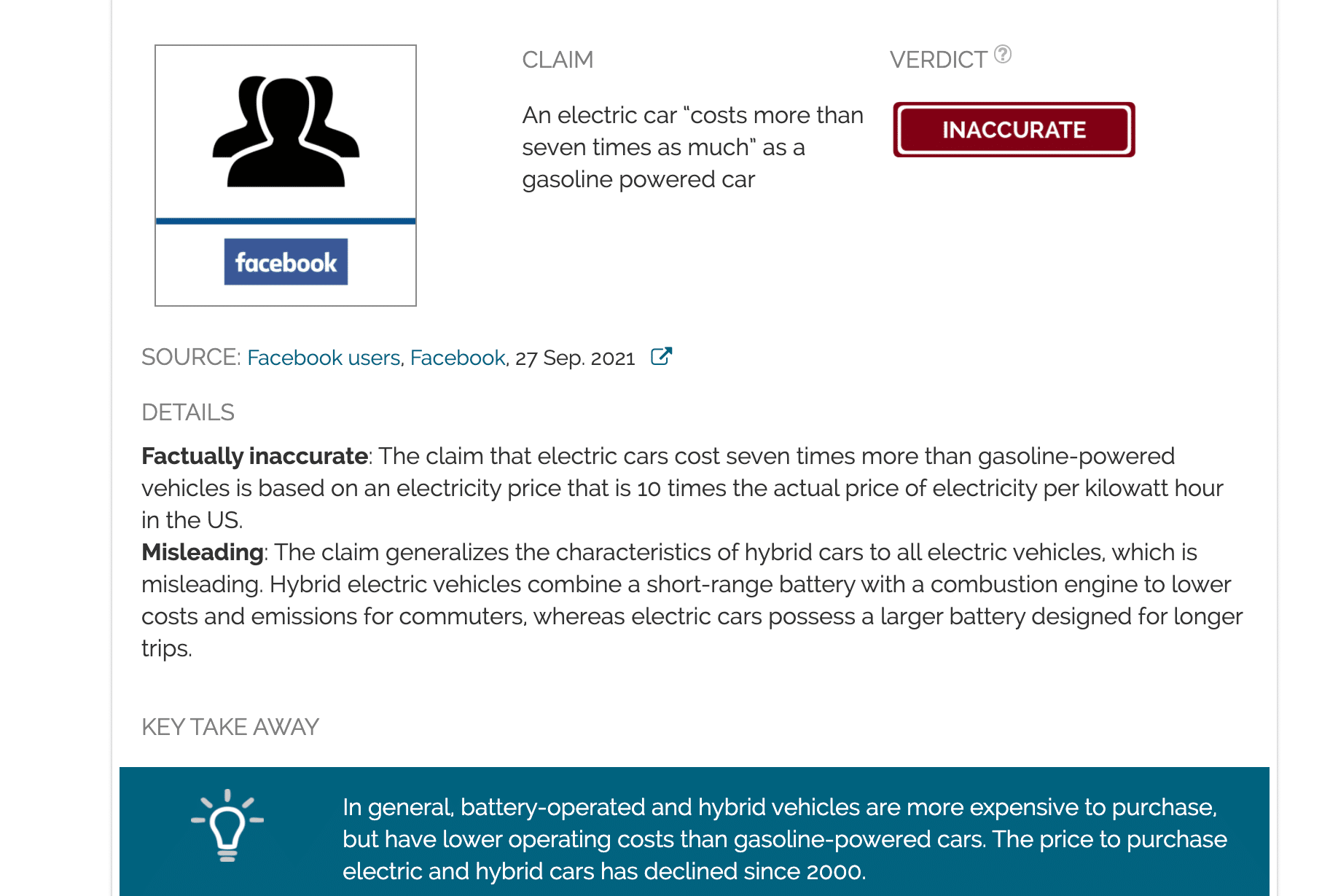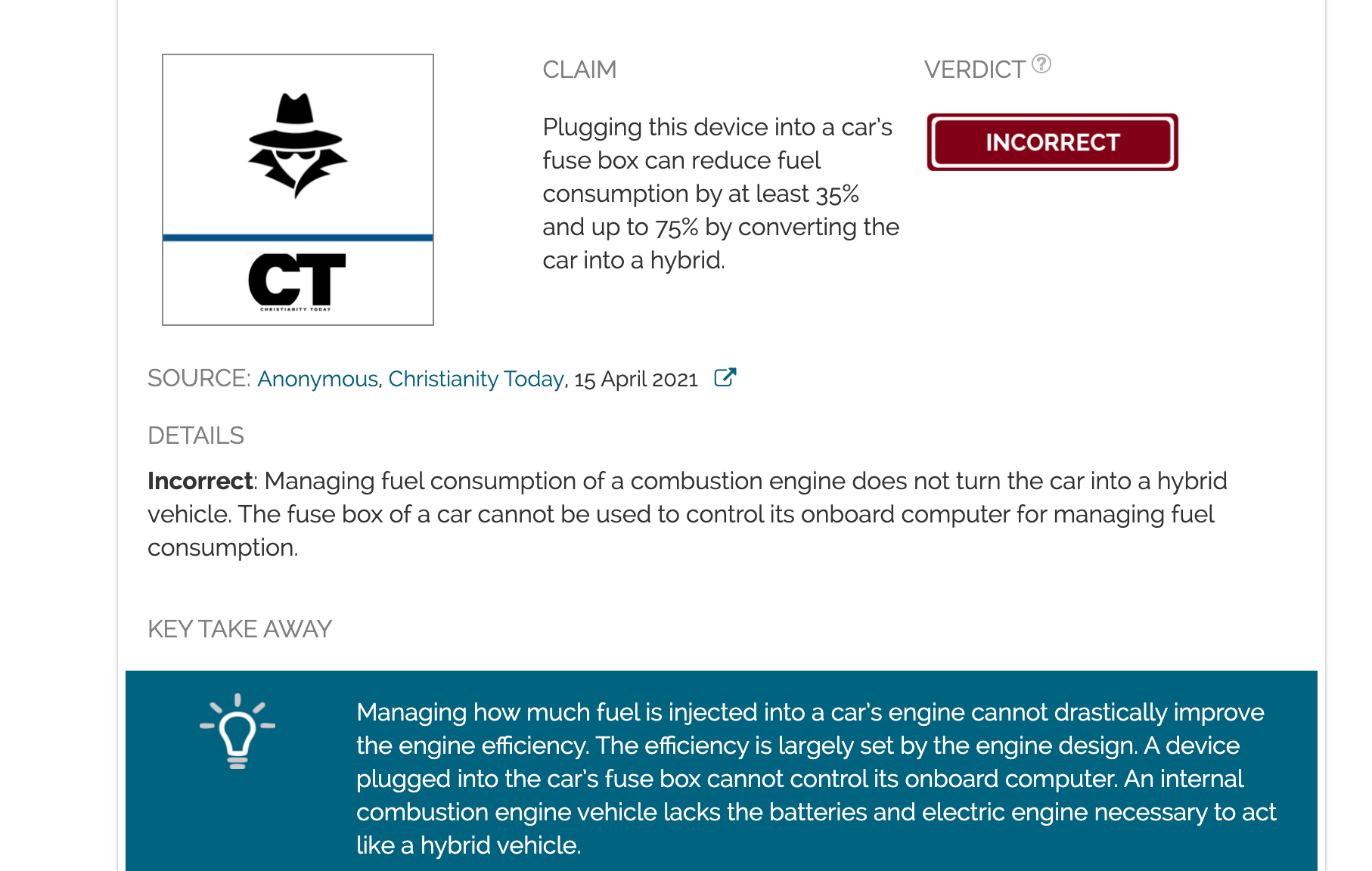- Energy
Connecting a generator to the wheel of an electric vehicle won’t recharge its battery
Key takeaway
A battery cannot be used to charge itself based on the law of conservation of energy and the second law of thermodynamics. The battery of an electric vehicle releases energy to the wheels, which turn the generator, but a portion of this energy is lost to heat and friction during the process. Since energy cannot be created from nothing, the generator sends less energy to the battery than it receives from the battery, which has the effect of depleting rather than recharging the battery.
Reviewed content

Verdict:
Claim:
The rotating wheel of an electric vehicle can recharge the vehicle’s battery by affixing a generator
Verdict detail
Incorrect: To recharge the battery of an electric vehicle while driving it, the generator must produce more energy than it receives. Since energy is always conserved, energy cannot be created from nothing; consequently, the generator cannot create more energy than it receives. The wheels of a car don’t produce energy, they only convert energy from an electrical to a mechanical form.
Full Claim
The rotating wheel of an electric vehicle can recharge the vehicle’s battery by affixing a generator: "You no longer need to stop to charge batteries at charging stations or charge them at night at home. While the vehicle runs, it charges the batteries."
Review
A March 2020 Facebook post by Ozzy’s Classics, a seller of collector cars, claimed that an electrical generator affixed to the wheel of an electric vehicle charges the car while it runs, removing the need to charge the car at a station or at home. The post included a picture of a Chevy Bolt with a generator attached to the car’s right rear wheel by a belt. The owner of the car built the rig at home. The idea was to “use the energy that wheel rotation produces to charge the batteries of the vehicle”.
The Laws of Physics Forbid the Generator from Recharging the Battery
While the generator produces electricity, it cannot produce enough electrical energy to recharge the car’s battery, based on the laws of physics. Furthermore, the generator uses energy from the wheel, making the car run slower and less efficiently. The two physical laws that prove this claim is incorrect are the law of conservation of energy and the second law of thermodynamics[1,2].
The law of conservation of energy states that the total amount of energy in the universe cannot change. Energy cannot be destroyed nor created from nothing. Instead, the energy may change form, for example from chemical (e.g., stored in a battery) to mechanical (e.g., a rotating wheel).
This law alone ensures that the generator cannot recharge the battery, except under ideal conditions. The battery could only be recharged if the energy from the battery is perfectly transferred to the wheel, which perfectly drives the generator, which then perfectly sends its electricity back into the battery. However, this scenario is impossible when someone is driving an electric vehicle, as the energy generated from a wheel turning is transferred to the ground to accelerate the car, instead of returning back to the battery. Any energy used to propel the car doesn’t go into the generator and therefore isn’t used to recharge the battery. Conversely, any energy sent back to the battery isn’t used to propel the car. Consequently, affixing a generator to a car wheel has no ultimate effect on the car’s performance, as any energy that is transferred back to the battery is eventually used by the wheel to propel the car until no energy remains in the car’s battery, wheel, or generator.
The second law of thermodynamics states that even the ideal scenario described above is impossible in the real world. In essence, the second law acknowledges the universe’s tendency towards disorder. Energy stored in an orderly form, such as a log, tends towards a disorderly form, such as ash, but not the other way around, that is ash doesn’t become a log. In regards to the claim, this law guarantees that energy doesn’t transfer perfectly between the car’s components. Energy will partly dissipate through heat and friction en route from the battery to the wheel, from the wheel to the generator, and from the generator back to the battery.
Considering the two laws together, any source of energy cannot be used to replenish itself. In the case of the car, even if the wheel is only used to turn the generator, such as when the car is raised on a jack, the generator would return less energy to the battery than it took from the battery. Specifically, electricity running through wires and friction between mechanical components (e.g., wheel axles and generators) create heat, which removes energy from the car. Since some of the battery’s energy is lost to heat in transit to the wheel and then to the generator, the generator can only produce less energy than the battery provides to it. Some energy is also lost to heat when it returns to the battery, so the battery receives less energy than it produced. Therefore, a generator attached to the wheel of an electric car cannot recharge the battery because it would have to create additional energy from nothing (in violation of energy conservation) to make up for the loss of energy to heat, friction, and propulsion of the car.
Contrary to the claim, the generator reduces the efficiency of the car and slows it down. The generator wastes energy by sending less energy to the battery than the battery sends to it. Diverting energy from the wheel to the generator also wastes energy and slows down the car by causing the wheel to spin more slowly. To maintain the car’s speed, the battery must release even more energy to the wheel to make up for the energy diverted to the generator, draining the battery faster than it would otherwise.
Affixing a Generator to the Wheel is an Attempt at a Perpetual Motion Machine
The way the claim is phrased implies that the car could run forever, which is by definition a perpetual motion machine[3]. For the reasons stated above, perpetual motion machines are largely recognized as impossible[1,2,4]. Over the centuries, many inventors have proposed such devices, but none have succeeded[5]. The scientific impossibility of a perpetual motion machine is so well-recognized that US patent offices refuse any perpetual motion applications, pending irrefutable proof that more energy was produced than consumed by the proposed machine[6].
REFERENCES:
- 1 – Giancoli (2008) Physics for Scientists and Engineers with Modern Physics. Addison-Wesley.
- 2 – Schroeder (2021) An Introduction to Thermal Physics. Oxford University Press.
- 3 – Britannica, The Editors of Encyclopedia. (2019) “Perpetual motion”. Encyclopedia Britannica
- 4 – Ruben (2011) Is It Possible to Construct a Perpetual Motion Machine? MIT School of Engineering.
- 5 – Angrist (1968) Perpetual Motion Machines. Scientific American.
- 6 – Newman v. Quigg, 877 F.2d 1575, 11 U.S.P.Q.2d (BNA) 1340 (Fed. Cir. 1989).



